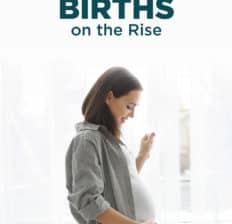This Dr. Axe content is medically reviewed or fact checked to ensure factually accurate information.
With strict editorial sourcing guidelines, we only link to academic research institutions, reputable media sites and, when research is available, medically peer-reviewed studies. Note that the numbers in parentheses (1, 2, etc.) are clickable links to these studies.
The information in our articles is NOT intended to replace a one-on-one relationship with a qualified health care professional and is not intended as medical advice.
This article is based on scientific evidence, written by experts and fact checked by our trained editorial staff. Note that the numbers in parentheses (1, 2, etc.) are clickable links to medically peer-reviewed studies.
Our team includes licensed nutritionists and dietitians, certified health education specialists, as well as certified strength and conditioning specialists, personal trainers and corrective exercise specialists. Our team aims to be not only thorough with its research, but also objective and unbiased.
The information in our articles is NOT intended to replace a one-on-one relationship with a qualified health care professional and is not intended as medical advice.
Home Births on the Rise: Does Insurance Cover Them?
March 9, 2022

There were a lot of unexpected trends during the pandemic, including buying at-home exercise equipment, at-home bread baking and basement offices. Another trend that was recently revealed is home birthing. A 2021 report from the Centers for Disease Control and Prevention shows that home births are on the rise, especially among women of color.
Why are home births on the rise? Reports point to an increase of hospital restrictions, which limit the role of birth partners and visitors.
Beyond that, some women choose home birthing because of the comforting environment and greater sense of control during labor and delivery.
Study: Home Births on Rise
A report published by the CDC indicates that although a vast majority of women in America give birth in a hospital, home births are on the rise, going from 1.03 percent in 2019 to 1.26 percent in 2020. That is an increase of 22 percent and the highest level of home births since at least 1990.
This rise in home births has been especially prevalent for women of color who are choosing births at home to avoid adverse outcomes in a hospital setting, which statistically affects this group of women at a higher rate. From March 2020 to December 2020, the number of Black mothers choosing home births increase by 36 percent, going from 0.5 percent to 0.68 percent.
While these numbers pale in comparison to hospital births, they do indicate a current trend in health care.
Why are women choosing to give birth at home? The most common reasons appear to be to avoid unnecessary interventions and reduce risks of adverse effects or death.
A 2019 report from the CDC shows that there are racial and ethnic disparities in pregnancy-related deaths, with Black, American Indian and Alaska Native women two to three times more likely to die from pregnancy-related causes than white women. This disparity increases with age, according to reports.
During the pandemic, there was an increase in home births because of the many restrictions put in place within hospitals, according to a CDC report. Some women chose home births to avoid hospital limitations on visitors, avoid mask wearing during labor and delivery, and subside fears of contracting the virus and being separated from their newborns.
Home Birth and Insurance
When you compare the total costs of hospital births versus home births, the latter is far less expensive, totaling around $4,600 compared to $13,800. However, insurance companies are far less likely to fully cover home births and often won’t cover prenatal and postnatal care in a home setting.
Even major insurance companies, like Aetna and UnitedHealthcare, do not cover home births fully or at all. If your health insurance provider does not cover home births, expect to pay between $3,000 and $9,000 out of pocket.
Before losing hope on a home birth experience, reach out to your provider about coverage and estimated costs.
Tips for Safe Home Birth
Research published in the International Journal of Women’s Health indicates that the benefits of home births include lower rates of maternal morbidity and interventions, such as episiotomy, instrumental vaginal birth and cesarean birth. Reports show that planned home births have been consistently positive, with high rates of satisfaction related to home being a more comfortable environment and feeling more in control of the experience.
Are you thinking about home birth for yourself or your partner? Here are some tips for safe home birth:
- Find support. For a natural childbirth, you’ll need the right team by your side. This will likely include a midwife, who can provide one-to-one delivery care and continuous attendance throughout labor and delivery. Do your research on midwives and even doulas, who serve as coaches to women during delivery. You can interview several options to make sure you find the right fit for you.
- Create the right environment. What does home birth look like to you? Is it dark and quiet or maybe surrounded by loved ones who serve as your support system? Discuss your ideal birthing environment with your partner and midwife to ensure that you’ll be comfortable when the time comes.
- Have a plan. If you opt for a home birth, it’s important that you understand the risks and have a plan if there’s an issue or emergency that requires a hospital setting. Some reasons why home births are moved to hospitals or health care settings include heavy bleeding, labor that stops progressing and the baby showing signs of distress. Discuss the emergency plan with your midwife beforehand.
- Prepare yourself physically. When preparing for your home birth, explore labor positions and breathing techniques. Take a class on the best methods for natural childbirth, like the Bradley Method that goes through pain-reducing techniques. Make sure to maintain a healthy diet during pregnancy, and keep up with light to moderate exercise. Stay well-nourished by drinking plenty of fluids and eating a nutrient-rich diet.
Conclusion
- A report published by the CDC shows that although a vast majority of women in America give birth in a hospital, home births are on the rise. In 2019, 1.03 percent of women gave birth at home compared to 1.26 percent in 2020, which is an increase of 22 percent and the highest level of home births since at least 1990.
- Home births on the rise during the pandemic are likely due to restrictions put in place within hospitals. Some women chose home births to avoid hospital limitations on visitors, subside fears of contracting the virus and being separated from their newborns.




